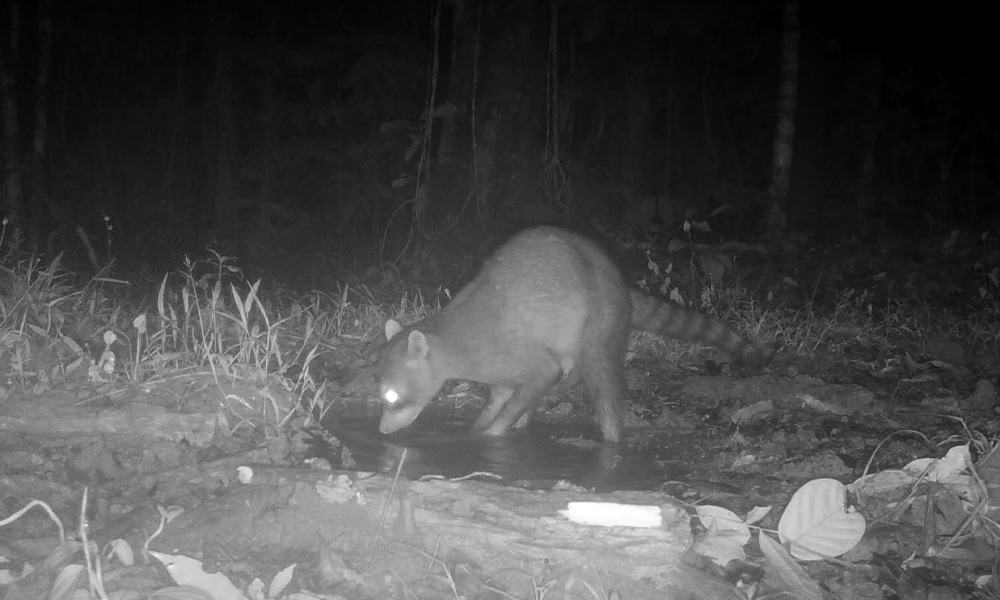Did you know that Costa Rica is home to two different species of raccoon? We’ve already covered the adorable trashcan-bandit, the northern raccoon. Well, its lesser-known family member, the crab-eating raccoon, also calls the land of pura vida home.
The crab-eating raccoon’s scientific name is Procyon cancrivorus. Procyon means “doglike” and cancrivorus means “crab-eating.” Its Spanish name is mapache cangrejero, which translates to crab-eating raccoon in English. I think it’s safe to say this little creature eats crabs.
To be perfectly honest, I’ve been putting off writing about crab-eating raccoons for several reasons. For starters, hardly anything is known about them, secondly, they’re extremely hard to differentiate from northern raccoons, and quite frankly I am a little confused as to how these two species can coexist in Costa Rica. Finally, I don’t frequently work in areas where I have the opportunity to record them with my camera traps. That all being said, let’s dive into each reason for my raccoon-based procrastination.
As far as what we know about their natural history, the answer is not much. They’ve hardly been studied for reasons that are unclear to me. What is known sounds like it has been copied and pasted from an article describing the northern raccoon.
They are mostly solitary and nocturnal. They forage mostly on the ground but are agile climbers and den in tree hollows. They eat a very raccoon diet of crabs, mollusks, fish, frogs, and invertebrates. The one difference between the crab-eating raccoon and northern raccoon is that while both are often found near water, the crab-eating raccoon is almost always found in or near water.
If you’re a regular person, less obsessed with the creatures that inhabit Costa Rica than I, and I showed you a big box with a mix of crab-eating raccoons and northern raccoons, you’d say, ‘Why do you have so many raccoons in a box?’. It would not be at all clear to you that I was showing you two different species. Both animals are approximately the same size, and they both have the little black face mask and the ringed tail. Even their behavior is similar, for instance they both eat a ton of crabs.
The big differences between the two are the crab-eating raccoon’s tail is a little less fuzzy and a little longer, their fur tends to be a little shorter, the fur on the back of their neck slants forward (as opposed to the backward slanting fur on the neck of the northern raccoon), the fur on the crab-eating raccoon’s belly can have an orangey twinge, and they stink worse than a northern raccoon if you get within smelling distance.
My confusion about the coexistence of the two species is based on the idea that each species fits into a certain niche in the environment, and that two species cannot fit into the same niche because eventually one will outcompete the other. It seems as though these two species are doing almost exactly the same things in the areas where they coexist (in southern Costa Rica and Panama). So what gives?
My final reason for taking my time to introduce you to this species is that they’re found in a part of the country where I haven’t had the opportunity to work very frequently. Northern raccoons are found throughout all of Costa Rica. Crab-eating raccoons are restricted to the southwestern part of the country. I’ve recently had the opportunity to do a little more camera trapping in the area of the Osa Peninsula, so I’ve been recording more crab-eating raccoons. I’m happy to share a few clips of those video with you in the video below.
About the Author
Vincent Losasso, founder of Guanacaste Wildlife Monitoring, is a biologist who works with camera traps throughout Costa Rica. Learn more about his projects on facebook or instagram. You can also email him at: vincent@guanacastewildlifemonitoring.com






